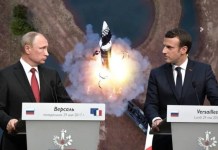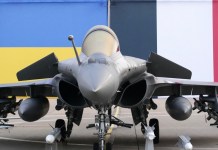The US and India have been historic adversaries, if not outright hostile to each other. The two countries were in opposite camps for most of the Cold War. While the US had been hobnobbing with Pakistan, India, despite leading the Non-Aligned Movement (NAM), was firmly in the Soviet camp.
Following the disintegration of the Soviet Union in 1991 and the end of the Cold War, there was hope that the US and India, the world’s oldest democracy and the world’s largest country, would become natural partners. However, India’s decision to conduct five nuclear tests in 1998 once again threw a spanner in the works.
In the aftermath of the 1998 Pokharan tests, economic and technological sanctions followed.
Given this history, the last two decades, starting with the Indo-US Civil Nuclear Deal (officially signed in 2008) and the formation of QUAD – an informal strategic forum comprising the US, Japan, India, and Australia – have been an exception rather than the norm.
During these two decades, we often heard that India and the US are natural partners and are destined to come closer. However, the so-called ‘strategic partnership’ has begun to unravel much sooner than anyone anticipated.
However, in New Delhi, there is still a tendency to dismiss this new phase in the Indo-US relationship as just a Trump phenomenon, which will die its natural death with the end of the Trump Presidency in January 2029, or perhaps, even sooner if Trump and Putin can reach a settlement on the Ukraine War during their historical meet in Alaska on August 15.
Never mind the fact that most of these analysts, till six months ago, were dismissing former US President Joe Biden (and Democrats) as anti-India, and were prophesying a new golden era of friendship between India and the US under the Trump Presidency.
This article argues three things: First, more than India buying Russian oil, the real irritant in the India-US relationship is what is termed as ‘Strategic Autonomy’ in New Delhi, but viewed as ‘indecisiveness’ and ‘ungratefulness’ in Washington.
Consequently, the Indo-US adversarial relationship will far outlast the Russia-Ukraine War.
Second, more than India’s friendship with Russia, it is New Delhi’s refusal to be roped in as an openly anti-Beijing force that is causing the recent downturn in its relationship with the US.
Thirdly, and most importantly, Trump or no Trump, the India-US romance is over. In fact, the rot in the Indo-US relationship has already set in during the Biden era.

The Downturn Began In The Biden Era
In the last phase of the Biden presidency, the US has begun to act openly against Indian interests.
This process started with Bangladesh, where, with covert US help, an India-friendly regime was overthrown and was replaced with a regime openly hostile to India and friendly with Pakistan, Turkey, and China.
Though the uprising against Prime Minister Sheikh Hasina happened in July 2024, the US had begun to send signals against the regime even before the January 2024 elections.
In September 2023, the US imposed visa restrictions on a host of Bangladeshi officials and their families, alleging that they were involved in “undermining the democratic process”.
This was a subtle message from Washington to Dhaka and New Delhi that they want regime change in Bangladesh.
Even before that, in 2021, the United States sanctioned the Rapid Action Battalion (RAB) of Bangladesh for its “excessive involvement in human rights abuses”.
An October 2023 research paper in the Observer Research Foundation (ORF) notes: “Much to India’s discomfort, the United States continues to pressure Sheikh Hasina to hold ‘free, fair, and peaceful elections’ in Bangladesh. The run-up to the Bangladesh elections indicates that despite mutual strategic priorities, India-U.S. cooperation in the region lacks common methods to achieve these goals.”
Once Sheikh Hasina returned to power in January 2024, the US termed the elections as not “free and fair”. This process ended with the violent overthrow of Hasina’s government and her escape to India.
Another not-so-subtle message from Washington was the Pannun affair. The US alleged that Indian intelligence officials were involved in a plot to assassinate Sikh-separatist Gurpatwant Singh Pannun.
In October 2024, an Indian RA&W official was named in a US chargesheet. However, even in this case, the strategic messaging has started much earlier, in September 2023, through the US lackey Canada.
Right after the G20 summit in New Delhi in September 2023, then Canadian Prime Minister Justin Trudeau dropped a bombshell in the country’s parliament when he alleged that agents of the Indian government were involved in the murder of a Canadian citizen and Sikh-separatist leader, Hardeep Singh Nijjar.
The incident was widely construed as a strategic messaging by Washington through Ottawa.
Similarly, the Gautam Adani incident, where a corruption case was filed in the US in 2024 for alleged bribery in India to Indian officials, was also seen as a message to the Modi government, as billionaire Adani is widely believed to be close to Indian PM Narendera Modi.
Seen in this light, Trump has merely followed in Biden’s footsteps, though with much more vigor and in his trademark non-diplomatic (even vulgar) fashion.
The sanctions are just one part of the deteriorating relationship. Trump’s courting of Pakistan, signing a new minerals deal with Islamabad, and Pakistan Army Chief Asim Munir’s nuclear threat to India from US soil, a historic first, are all signs of things to come.
This downturn can outlast the current Russia-Ukraine war and even the Trump presidency.
At the heart of this downturn is not India buying Russian oil or India’s trade deficit with the US, for on both these accounts, China is much ahead of India, and still, Trump has not imposed similar tariffs on China.
In 2024, the US had a trade deficit with both India and China. However, the US’s trade deficit with India dwarfs its trade deficit with China.
Last year, the US exported US$143.5 billion worth of goods to China, and imported a staggering US$439 billion worth of goods, resulting in a trade deficit of nearly US$295 billion.
In comparison, the US trade deficit with India stood at nearly US$46 billion. The US trade deficit with China is more than six times its trade deficit with India.
Similarly, China is the biggest importer of Russian crude oil, not India. According to the Center for Research on Energy and Clean Air (CERA), between December 2022 and June 2025, China absorbed 47% of all Russian crude oil exports, followed by India at 38%, the EU (6%), and Turkiye (6%).
Additionally, China was the biggest importer of Russian coal. During the same period, China absorbed 44% of all Russian coal exports, followed by India at 19%, Turkiye at 11%, South Korea (9%), and Taiwan (4%).
At the heart of this downturn is what is described as ‘Strategic Autonomy’ in New Delhi. The calculus in Washington is that if India wants to be a third pole, or a third force in international geopolitics, then the US is under no compulsion to aid India’s rise.
This might not be a Trump phenomenon, but the emerging Washington consensus.
According to this view, not only did India continue to buy Russian oil and refuse to condemn Russian aggression in Ukraine clearly, but it also could not deliver firmly on anti-China rhetoric and QUAD, which remains an informal alliance lacking any formal treaty or charter.
China’s rise today is closely tied to the US cooperation in the 1970s and 1980s. However, what people tend to forget is that during those days, Beijing was an active and openly anti Soviet force, Washington’s main rival during the Cold War era.
By contrast, India has refused to be roped in as an openly anti-China force. New Delhi remains part of BRICS and the SCO. China also remains India’s second-largest trade partner.
India also realizes that it needs both Washington and Beijing for its economic development.
“There is no way that you (India) can be a $10 trillion economy without having a substantial trading relationship with China,” the President of ORF, Samir Saran, said in a recent podcast.
Notably, Trump has also raised the issue of India’s membership in BRICS multiple times. It is no coincidence that Brazil and India are two nations currently facing the highest US tariffs.
Since the US has limited leverage against China (as Beijing can retaliate by restricting exports of critical rare earth minerals to the US) and Russia (already heavily sanctioned), Trump hopes to weaken the BRICS alliance by attacking Brazil and India.
For some time, India has made it clear that it favors and is actively working towards a multi-polar world. In this worldview, New Delhi prefers alliances with all major powers rather than binding security pacts with one power center.
How India navigates the emerging Trump Challenge will define India’s geopolitics in an increasingly polarized world in the coming decades.
- Sumit Ahlawat has over a decade of experience in news media. He has worked with Press Trust of India, Times Now, Zee News, Economic Times, and Microsoft News. He holds a Master’s Degree in International Media and Modern History from the University of Sheffield, UK.
- VIEWS PERSONAL OF THE AUTHOR.
- He can be reached at ahlawat.sumit85 (at) gmail.com




